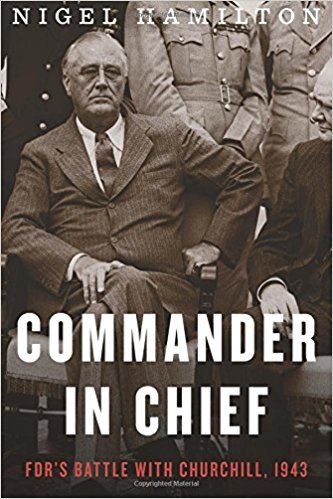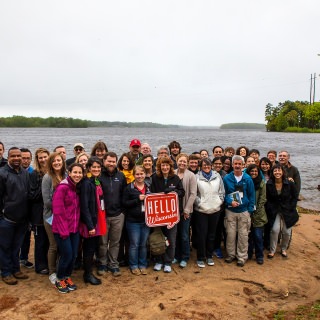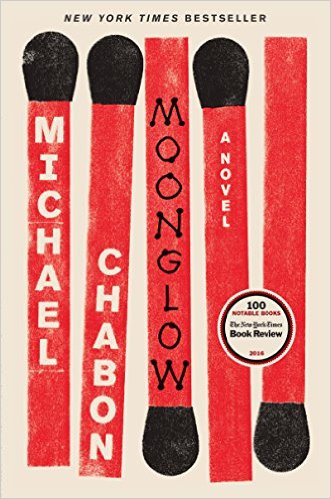
There are leadership and management lessons to found in the most surprising places. Nigel Hamilton’s “Commander in Chief”, the middle book in what will be a three-volume history of Franklin Delano Roosevelt’s strategic leadership of the U.S. Armed Forces during World War II, stands as an insightful case study in what it takes to effectively guide a large organization with competing interests, imperious team members, and wildly divergent opinions.
FDR’s skill as a wartime leader has been largely unappreciated, due to his death before the conclusion of the war. By way of contrast, British Prime Minister Winston Churchill lived well past the war, writing a six-volume memoir, an opus that won him the Nobel Prize for Literature and touted his genius in directing Allied war planning, while leaving President Roosevelt on the periphery. It was a magisterial narrative, but one that historians now view with a jaundiced eye, because—to put it charitably—it’s author was at many turns economical with the truth.
The first volume of Hamilton’s work, “Mantle of Command” covered the period from 1941-42, highlighting Churchill’s relentless work in wooing the U.S. into entering the war and FDR’s efforts to manage the showboating General Douglas MacArthur—whose Congressional supporters were pushing to have him installed as supreme allied commander. Perhaps the most surprising element of the book was the battle FDR was forced to wage against his own military leadership—especially Army Chief of Staff General George C. Marshall and Secretary of War Henry Stimson. Marshall and Stimson wanted to launch an immediate invasion of the French coast to open up a second front and relieve the pressure on Russia.
FDR saw this strategy as a disaster in the making, throwing inexperienced U.S. troops against the Wehrmacht, Germany’s well-trained and battle-hardened army. The President preferred striking a blow against the Axis Powers elsewhere, giving American forces time to learn how to fight.
At the outset of “Commander in Chief”, the North African campaign, known as “Operation Torch”, has been a success, but FDR still faces challenges from his own commanders, who want to stop there and get back to their pet project—the cross-Channel invasion of France.
At the end of 1942, Secretary Stimson meets with General Stanley Embick, the former deputy U.S. Chief of Staff, to hear his report on “the question of what we shall do after the African adventure”. Their strong support for an Allied invasion of France in the spring or summer of 1943 blithely ignored the horrific results of a small-scale test run of such an attack that had been run by a large force of Canadian soldiers. Hamilton pulls no punches in laying out the folly of their position.
“Stimson was seventy-five years old; Embick, sixty-five.
In younger men, such ill-considered ardor could perhaps have been forgiven. But for two individuals who had enjoyed distinguished military careers and had themselves served in war, albeit in a different age, to task tens of thousands of inexperienced U.S. servicemen and their field commanders with a perilous invasion across the English Channel, at the most heavily defended area – the Pas-de-Calais – was willful fixation. The tragic slaughter of so many Canadian troops at Dieppe was well known in Washington professional military circles, despite attempts by the British to cover up the appalling number of Canadian casualties. To imagine U.S. forces would, without more experience in amphibious operations, do better than brave Canadians in invading the fortified Pas-de-Calais area of northern France was pure hubris – the secretary and his colleagues at the Pentagon steadfastly refused to see the Mediterranean as a necessary proving ground for the armed forces of the United States.”
Churchill proved to be no less a victim of hubris when it came to opposing FDR’s plan, doing clean up work in North Africa and then invading Sicily, stopping there to avoid a wider battle in southern Europe and preparing for a 1944 cross-Channel attack. Seeing an opportunity to erase his own failures in the region during World War I and wanting to establish an Allied foothold there before the Red Army could, Churchill strenuously advanced the idea of an invasion of Yugoslavia and the Balkans, perhaps to be launched from Turkey.
Unfortunately, that plan of attack ignored the geographical difficulties, the mountainous terrain of the Balkans that would slow any invasion force and likely result in heavy casualties.
The book highlights FDR’s tireless work in dealing with this tug of war throughout 1943, securing Churchill’s support at key junctures only to find his ally to be less than steady and reliable. Underlying much of the struggle is FDR’s vision of a post-war world, one that did not replicate the mistakes of Versailles, but resulted in the formation of the United Nations. Laid out in the Atlantic Charter, with its Four Freedoms, FDR’s post-war agenda had little sympathy for the concerns of empire-building or even maintaining far-flung colonial outposts. Churchill knew the world was changing, that Great Britain’s colonial outposts (most notably India) were pushing for independence, and that his U.S. allies had no interest in helping him maintain control of those holdings.
Roosevelt’s deft leadership is well worth the examination it receives here. He had a remarkable ability to avoid unnecessary confrontation, but to recognize when a situation required direct discussion and his intervention to lay down the law. The first two volumes of this important work will certainly change the way we see FDR as a military leader and it provides timely lessons today for those seeking guidance in how to manage in difficult and challenging circumstances.











